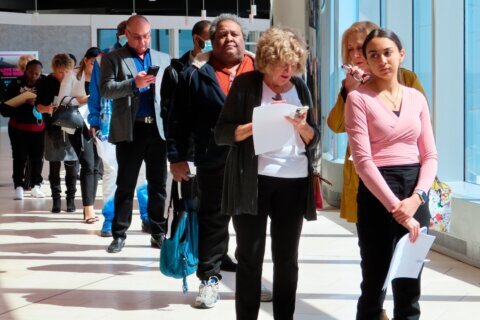U.S. companies have eliminated millions of full-time positions since the COVID-19 pandemic began. And while the economy has gained or regained millions of jobs in recent months, more companies are choosing to fill positions with temporary employees from professional staffing firms.
A recent report from research firm Gartner found that 32% of companies are shifting a portion of their workforce from full-time employees to contingent workers. They need the staff, but it significantly reduces overhead.
“We take care of benefits, sick leave, taxes, payroll, all of those things that usually employers are responsible for for their permanent employees,” Kristen Johnson, at the D.C. office of staffing for Beacon Hill Associates, told WTOP.
Demand for professional temp workers in the D.C. region has been broad this year.
“We’re seeing a lot of movement in HR. A lot more companies are hiring executive and administrative assistants. We’ve seen a lot in the digital marketing space. In terms of tech, a lot of cleared work for government clients and a lot of cybersecurity,” Johnson said.
Demand is high for temp workers in D.C. in legal, finance and accounting.
The American Staffing Association estimates that more than 3 million Americans are currently working for staffing companies. Staffing Industry Analysts reports that staffing agencies added more than 100,000 jobs across the country in June, July and August.
For D.C.-area professionals with in-demand skills, temp work can be a good bridge.
“If you work with a staffing firm, your resumé gets to the top of the list because we are sending them directly to human resources or our hiring contacts. I think also, it is a great foot in the door. I can’t tell you how many times a client has ended up extending the contract and then making the candidate a permanent employee,” Johnson said.
Like many full-time jobs, many temporary positions have shifted to remote working this year.
An estimated 2% of the contingent workforce worked remotely in 2019. That has increased to 50% this year, and is expected to stay around 20% even after the pandemic ends.








